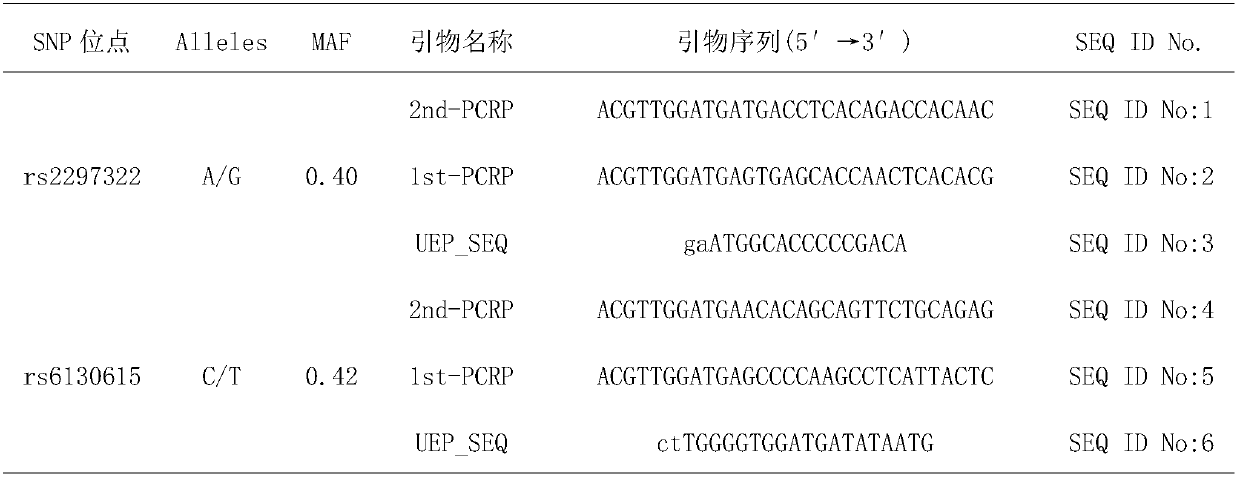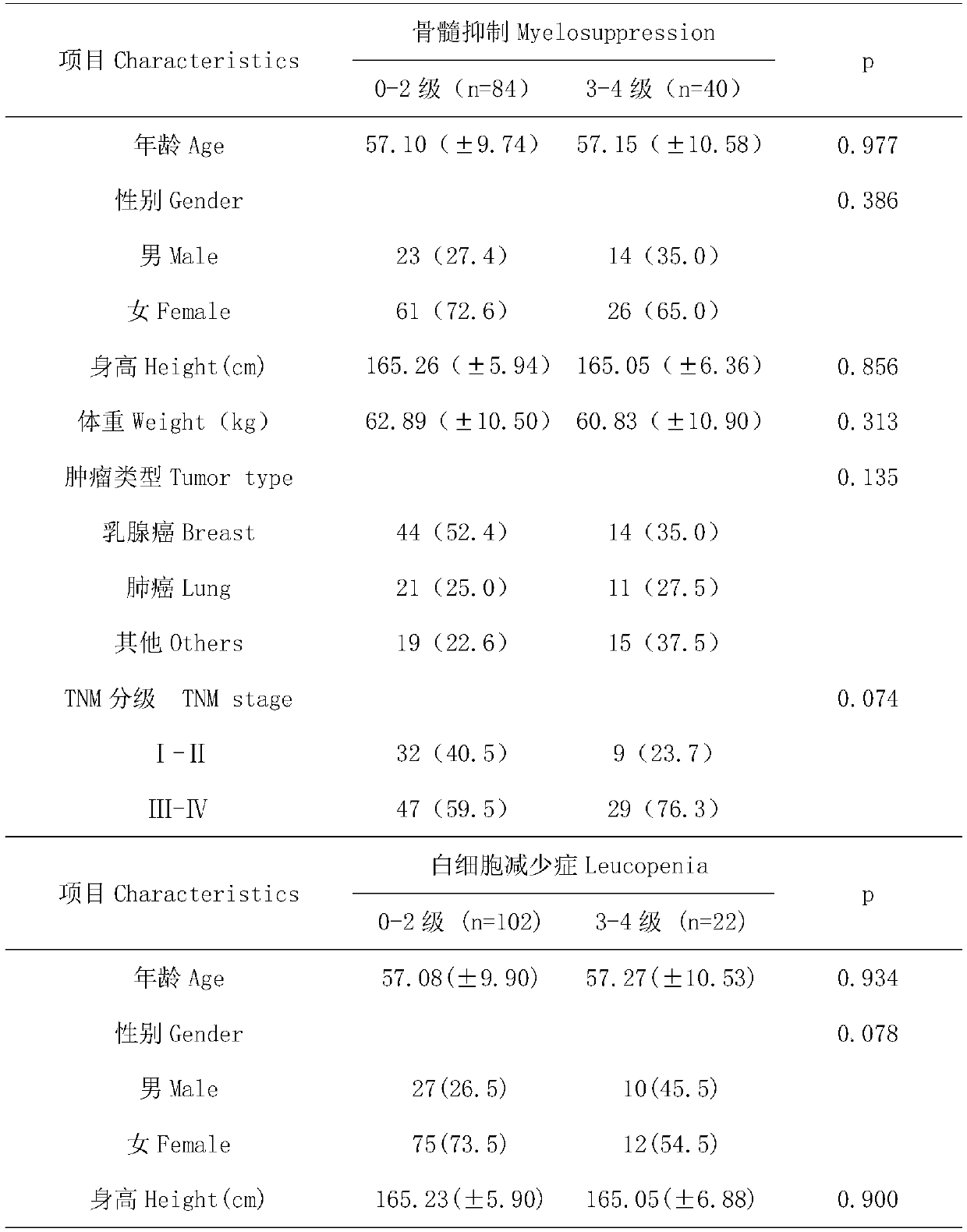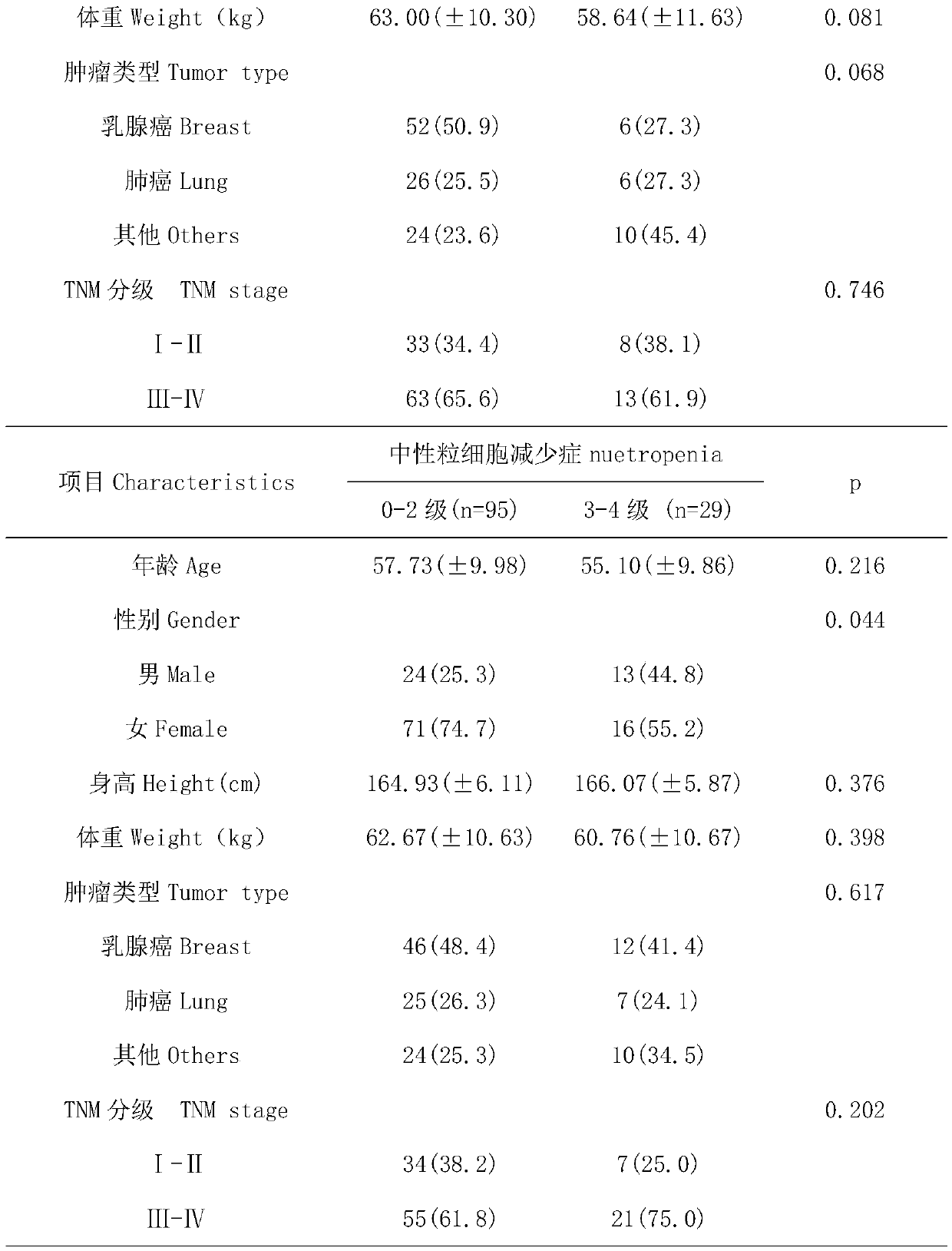SNP (Single Nucleotide Polymorphism) marker related to bone marrow suppression of taxane chemotherapy drugs and application of SNP marker
A chemotherapeutic drug and bone marrow suppression technology, applied in the field of SNP markers, can solve the problems of inapplicability to Han patients and inaccurate clinical drug guidance for Chinese Han population, so as to quickly and accurately grasp the patient's condition, improve efficacy and safety, and improve prognostic effect
- Summary
- Abstract
- Description
- Claims
- Application Information
AI Technical Summary
Problems solved by technology
Method used
Image
Examples
Embodiment 1
[0041] This embodiment is the collection of samples and the arrangement of sample data.
[0042] Table 2 Comparison of clinical characteristics between the ADR group and the control group
[0043]
[0044]
[0045] From 2012 to 2015, the inventor collected a large number of blood samples from cancer patients from the Fourth People's Hospital of Jinan City, and selected 124 samples that met the following criteria by sorting out the sample data: (1) aged between 18 and 80 years old (2) No major organ dysfunction, blood routine, liver and kidney function, and heart function were basically normal before the first chemotherapy; (3) All patients received at least one cycle of chemotherapy based on paclitaxel or docetaxel; (4) ) Except for patients with bone metastases, all patients had a baseline absolute neutrophil count greater than 1.5×10 9 / L; (5) Baseline information such as age, gender, height, weight, tumor type, and tumor stage of the patient; (6) Detailed information...
Embodiment 2
[0048] This embodiment is the peripheral blood DNA extraction, genotype detection and result analysis. The specific steps are:
[0049] 1. Use the QIAamp DNA Mini Kit to extract DNA from peripheral blood according to the instructions, add 20ul of QIAGEN Protease (or proteinase K) solution to the bottom of a 1.5ml centrifuge tube, extract 200μl of fresh blood and add it to the centrifuge tube;
[0050] 2. Add 200μl Buffer AL, shake for 15s, and bathe in 56℃ water for 10min;
[0051] 3. Centrifuge for a short time to remove the liquid along the inner edge of the centrifuge tube cover;
[0052] 4. Add 200 μl ethanol (96% to 100%), shake for 15 seconds, and centrifuge for a short time to remove the liquid along the inner edge of the centrifuge tube cover;
[0053] 5. Add the mixture obtained above (including the precipitate) into the QIAamp spin column, put the spin column into a 2ml collection tube, close the cap of the centrifuge tube, centrifuge at 6000×g (8000rpm) for 1min, ...
Embodiment 3
[0075] In order to further verify the effect of the above SNPs on taxane-related leukopenia or neutropenia, an association analysis was performed on patients with severe leukopenia or neutropenia. The results showed that SLC15A1rs2297322 and HNF4αrs6130615 were significantly associated with myelosuppression. SLC15A1rs2297322 was associated with increased risk of both leukopenia and neutropenia (REC, OR=2.933, 95% CI: 1.017-8.464, p=0.047; REC, OR=3.549, 95% CI: 1.290-9.763, p=0.014). HNF4α rs6130615 was significantly associated with increased risk of leukopenia (REC, OR=2.933, 95% CI: 1.017-8.464, p=0.047). In two association analyses, rs2297322 and rs6130615 were identified as susceptibility loci for taxane-associated myelosuppression.
[0076] Thus, the combination of rs2297322 and rs6130615 could well differentiate cancer patients prone to varying degrees of myelosuppression.
PUM
 Login to View More
Login to View More Abstract
Description
Claims
Application Information
 Login to View More
Login to View More - R&D Engineer
- R&D Manager
- IP Professional
- Industry Leading Data Capabilities
- Powerful AI technology
- Patent DNA Extraction
Browse by: Latest US Patents, China's latest patents, Technical Efficacy Thesaurus, Application Domain, Technology Topic, Popular Technical Reports.
© 2024 PatSnap. All rights reserved.Legal|Privacy policy|Modern Slavery Act Transparency Statement|Sitemap|About US| Contact US: help@patsnap.com










